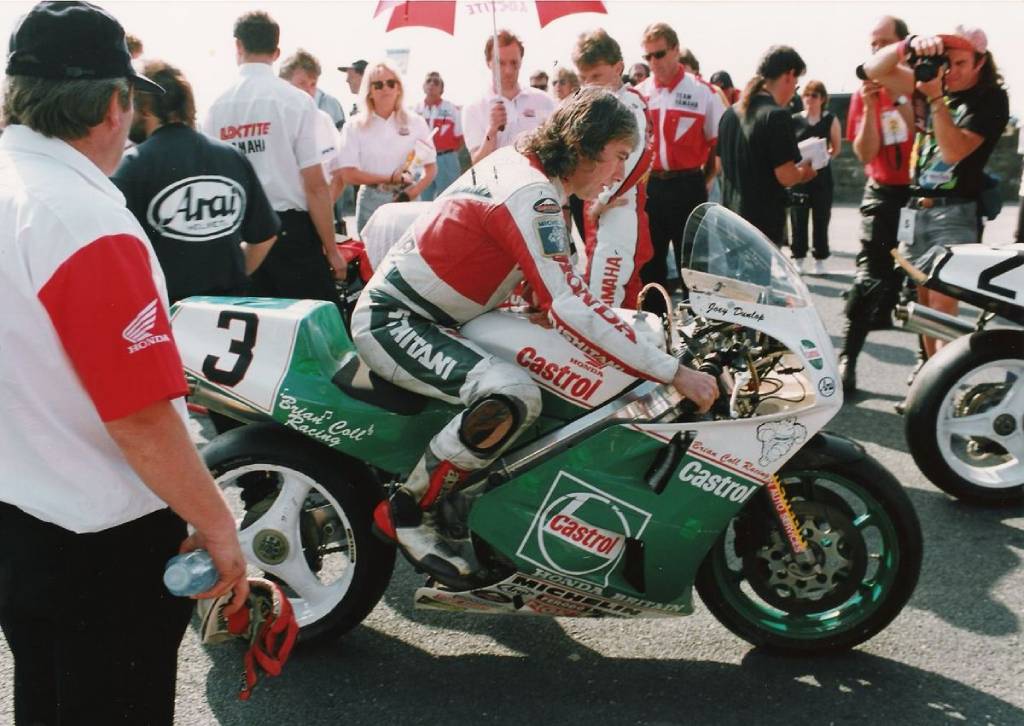Motorcycle Racer, Joey Dunlop
It all takes place on a little island in the middle of the Irish Sea between Ireland and Britain. It’s a very unique destination.
As a self-governing Crown dependency, it has the oldest continuously serving parliament in the world. It has its own language, Manx.
Its people are British citizens and the head of state is the Queen.
But the roads – well they’re still ruled by the king! And although the flash of that infamous yellow helmet on the hallowed ground at the Isle of Man may be gone, the legend of Joey Dunlop will live on forever.
William Joseph Dunlop, better known as Joey, was born February 25th, 1952, in Ballymoney, Northern Ireland, in a cottage without running water.
Initial Steps Towards Motorcycle Racing
He had what many would consider a normal yet tough upbringing, but it was in 1969 during a race at the former Maghaberry Airfield where he threw his leg over a Triumph Cub and took his first step towards becoming one of the greatest motorcycle racers of all time.
The Tiger Cub was a simple 199cc push-rod single producing about 10 horsepower, and although it wasn’t the machine that would give anyone a genuine taste for speed, it was more than enough to get young Joey hooked.
The Motorcycle Road Racing Club of Ireland ran three meetings that year at Maghaberry, a former military airfield that would later become a prison.
In the first two meetings, the 200cc event was won by Ray McCullough, already a star and destined to become Joey’s foremost rival in the mid-Seventies.
Joey himself failed to figure in the top six, and it would be another two years before he’d reach such giddy heights.
In one of those races, on board another Cub, was Davy Wood, who would later become Joey’s unofficial manager.
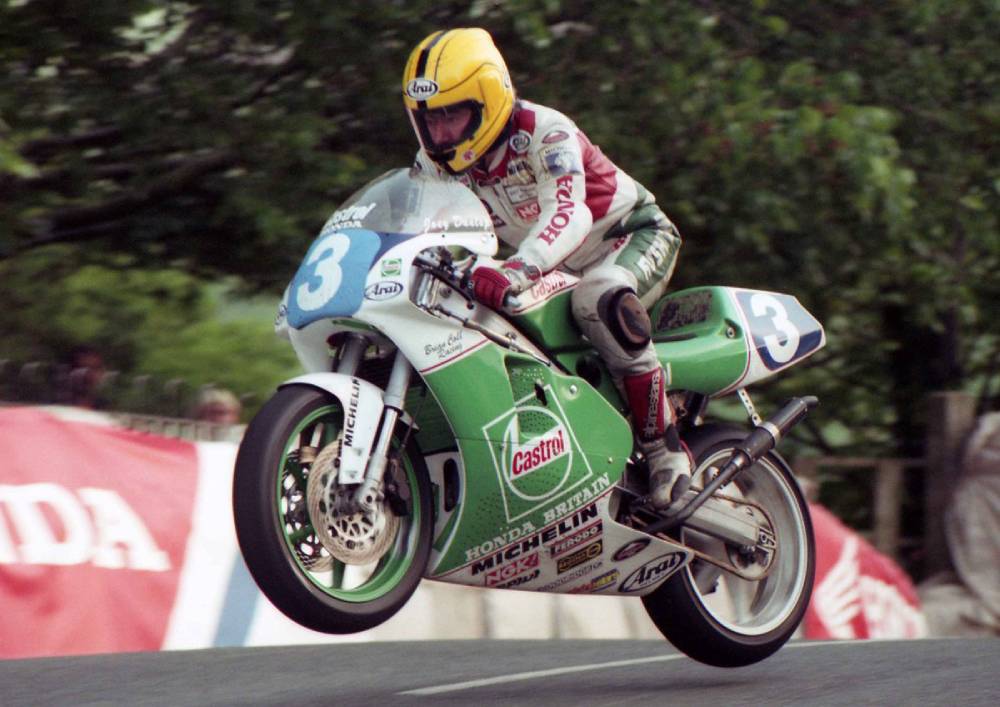
Motorbike Racing Along With Dad
In the early days of his racing career things were tight moneywise, so Joey and his father would often sneak away with the racing bike crammed into the back of an old Mini Traveller van.
It wasn’t what most would consider the most ideal introduction to racing, but throwing together a racing bike with no budget whatsoever was the sort of thing Dunlop’s childhood had prepared him for.
His father, Willie, was a mechanic by trade and had even rigged the Dunlop family home with a makeshift windmill to provide electricity.
He obviously had a good teacher, and the pair would often work long hours together in the garage.
Mastered His Motorcycle Racing Skills
Joey’s first road race, also on the Triumph, came at the Temple 100 in 1970, riding number 32 in the 200cc handicap event.
It would be six years later in 1976 when Joey made his debut at the Isle of Man TT on a 250 Yamaha.
Making his way over the Irish Sea on a fishing boat, he signed on just after he arrived and was out for his first ever practice laps that same evening.
He’d never even seen the course before, he hadn’t even driven around it.
It was definitely no initiation for the faint hearted.
By the following year, however, he’d learnt the circuit pretty well.
He finished tenth in the Junior on a Yamsel, fourth on the same make of bike in the Senior and seventh in the Classic on a Yamaha.
The TT programme that year also featured a special four-lap race to commemorate the Queen’s Silver Jubilee.
Joey, riding the Rea 750 Yamaha, won the race easily setting a race speed of 108.86mph and a fastest lap of 110.93mph – he was obviously a quick learner.
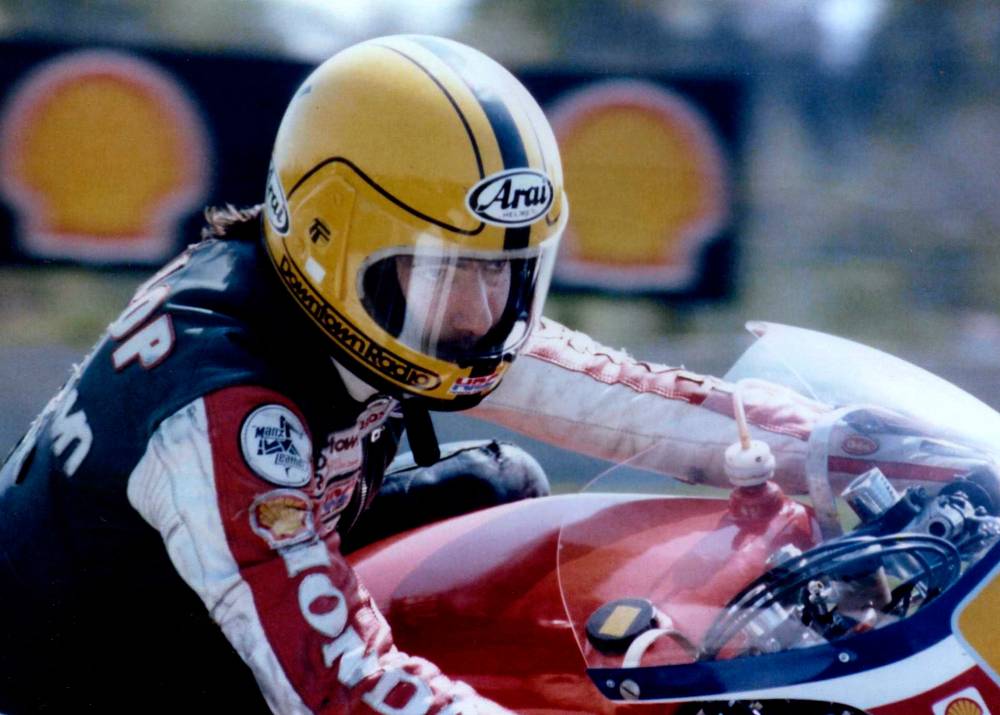
Victories and Defeats in Motorbike Racing World
In the 1978 Junior he finished eleventh on a Yamaha, just ahead of Mike Hailwood, and rode a Benelli in the Formula 2 race to finish fifth.
For the Formula One race, he rode a fearsome six-cylinder Benelli, but retired on the second lap.
In the Classic he was lying fifth at the end of lap one on the Johnny Rea Yamaha but the exhaust split on the next lap and forced him to retire.
He managed sixth in the same event the following year, his only result of note that TT.
The racing world soon looked different to Joey after arriving at the 1980 TT unsure about his racing future.
His brother-in-law and mentor, Mervyn Robinson, had been killed at the North West 200 a couple of weeks before which almost led to him giving up racing entirely.
He had already cancelled his other entries but decided to compete in a last TT.
To begin with things weren’t going to plan. Joey was sixth fastest in practice on the big Yamaha at 108.54mph but there was no sign he could give the works stars anything to worry about.
In the four lap 250 Junior TT he was off the leader board for the first three laps but crept up to twelfth on the final lap.
His TZ500 Yamaha had given gearbox problems in practice, so Joey elected to ride his 350 Yamaha in the Senior TT.
After lying in twelfth place for most of the race, he pulled up to ninth by the end, about twenty seconds behind Charles Mortimer on the team-sponsored Suzuki.
Things weren’t looking much better for the final and richest race of the week, the six lap Classic.
Joey started at his lucky No. 3, and astonished everyone with a first lap at 112.25mph to lead Jeff Sayle by over six seconds.
On the final lap, Joey set a new lap record of 115.22mph to win by over twenty four seconds.
Joey had stamped his authority at the TT, but it was in 1983 where we would witness start of a remarkable sequence of results.
Riding the new Honda RS 850 V4, Joey set a new lap record of 115.73mph on the first lap of the Formula 1, and took the lead by seventeen.
Joey came home to win by just under a minute at a record average speed of 114.03mph, but although the winning margin was a comfortable one, it had been a hard race and Dunlop finished exhausted.
As soon as he could he was on the plane back to Northern Ireland to see his wife and one week old baby son Michael, born in practice week.
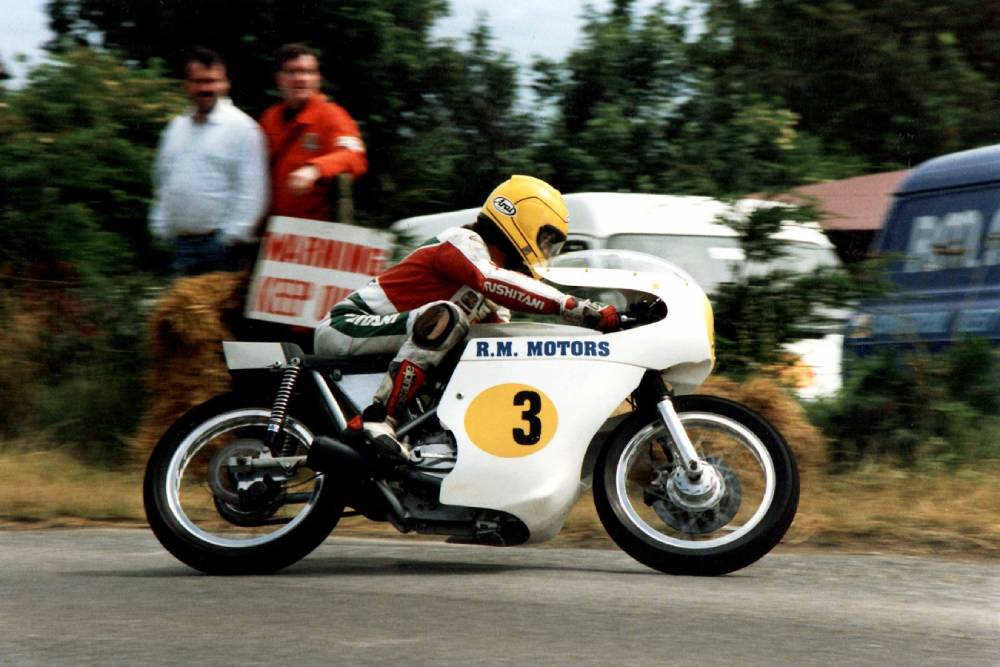
Obstacles Couldn’t Stop Him!
The following year was a TT of mixed fortunes for Joey. In the all-important Formula 1 he continued his success.
Joey led team-mate Roger Marshall for the first four laps with Tony Rutter on a Ducati in third place.
On the fifth lap, though, Marshall took the lead and Joey had to set a new lap record on the last lap – 115.89mph – to win the class for the second year.
But it was in 1985 when Joey was truly tested.
Especially when you take into account the escapade of travelling there.
Joey found out in May of 1985 when he, Brian Reid and other passengers and crew, numbering thirteen in all, were making their way over to the Island aboard the Tornamona, a former fishing boat.
The vessel had departed from Strangford, County Down with Dunlop, Reid and other riders along with racebikes and equipment.
As it turns out, strong currents into Strangford Lough pushed the Tornamona on to St Patrick’s Rock where the rudder broke off in a crevice.
The boat quickly sank, but not before all 13 passengers and crew were rescued by the Portaferry Lifeboat.
Five bikes, Joey’s and Reid’s, were later recovered from the Lough, but fortunately Joey’s works Hondas had arrived at the Island by another route.
The incident would have been enough to put any racer off their game, but Joey seemed to just shrug it aside and get on with business – which turned out to be one of his most successful TT’s yet.
Man Of Mountain And His Racing Speed
In Formula 1 he led from start to finish with a new class lap record of 116.42mph.
Marshall and Grant both retired when lying second leaving Joey to win by over five and a half minutes from Tony Rutter and Steve Parrish.
Joey’s Junior win was due to the continuing bad luck of his fellow boat passenger Brian Reid. Reid was leading and set to win when he ran out of fuel – Joey finished fifteen seconds ahead of Steve Cull with Eddie Roberts in third.
For 1985 the Classic TT had been dropped and the Senior restored to its rightful place as the last race of the week.
The capacity limit had been increased, however, to include the Formula 1 machines.
This time it was Mick Grant’s turn for misfortune as he crashed at the Black Dub.
Although teammate Roger Marshall ran Dunlop close, Joey won by sixteen seconds to score the TT hat trick – only managed before by Mike Hailwood.
Another Formula 1 Championship added to Joey’s rapidly growing reputation as the world’s finest road racer.
Joey’s win in the 1987 Formula 1 would be his fifth in succession, equalling the record of Hailwood and Agostini for winning the same race five years on the trot.
In 1988 Joey won the Senior by fifty-one seconds and set another race record at 117.38mph.
He also achieved his second TT hat trick and took his tally of victories to thirteen, just one behind the all-time record of the great Mike Hailwood.
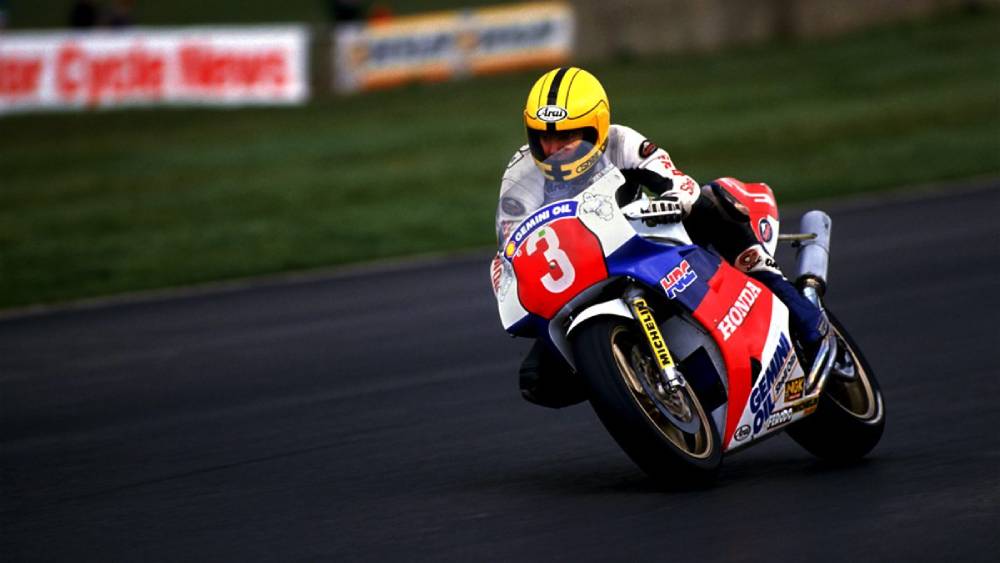
Formula 1 Racing Battle With Brother
A crash at Brands Hatch at Easter 1989 put Joey out of that year’s TT, which was dominated by Steve Hislop.
Joey still wasn’t one hundred percent the following year and the best he could manage was eighth in the Formula 1.
In 1991, though, he showed that he was far from finished with a fine second place in the Senior behind Hislop and ahead of Phillip McCallen.
But it was in the Lightweight 125 that he generated the most excitement.
Joey led the race for the first two laps from his brother Robert.
The majority of the crowd felt Robert would let brother Joey have the win he needed to equal Mike Hailwood’s record, but Robert was having none of that.
He took the lead on the third lap and went on to win from Joey by forty seconds.
It was a controversial victory with the fans but not so much with the two brothers.
Besides, if he was going to equal the record he would have to do it fair and square and Joey wouldn’t have wanted it any other way.
It was the following year that he would equal the record, again in a battle with his brother Robert.
For much of the race they couldn’t be separated on the timing boards, but towards the end Joey finally drew away and won by just eight seconds.
Joey seemed relieved at first that the pressure was off.
But if anything, that just paved the way for the next pressure cooker, which was whether the fans would turn against him if he broke Mike Hailwood’s record.
Joey did break the record in 1993, but his reaction speaks volumes about the man’s character.
During the ‘70s and ‘80s we read a lot about the likes of Agostini, Sheene, Roberts and others who had helped change the image of motorcycle racing.
They were smart, photogenic, good with sponsors and articulate ambassadors for their sport. Their achievements deserve to be applauded.
But in an increasingly commercial and media led sporting arena, there was something comforting and old fashioned about a man achieving greatness whose first thought was never ‘how much is this worth’ but whether the fans would still admire him.
No Stop For The Success In Racing
In his final appearance at the Isle of Man TT at the turn of the century, Joey Dunlop was 48 years of age.
Many just thought he was there to make up the numbers, he of course had other ideas.
That year in 2000 he won three races, including the Formula One race, to notch up his third hat-trick at the TT – the only rider to have ever achieved the feat.
Humble But Strong Racer Rested In Peace
It seemed he was on top of the world and definitely at the top of his game again. But everything was about to change.
It was only a few weeks later that we would hear of the devastating loss when Joey Dunlop was killed on Sunday 2nd July 2000 while racing through the pine forests on Estonia’s Baltic coast.
The loss obviously belonged to the Dunlop family and to Joey’s close friends, but it was also felt not only through the country of Ireland but the entire world.
The crash happened three laps into the race, just as it began to rain.
Eye witnesses described the 125’s rear wheel stepping out part-way through the last corner, a left-hand bend where the surface is quite flat and water tends to lie.
Joey corrected the slide, but was by then running out of room.
This was deep in the pine forest where there was no run off, and a crash was inevitable. Joey got rid of the bike, which wedged itself between two trees, snapping in two.
Parts of the machine struck two spectators, but their injuries were mild.
Joey wasn’t so lucky and struck another tree, which killed him instantly.
Evidently no solo rider had been killed on the circuit since 1961.
Wet or dry, you’d have bet everything you own on Joey not being the next.
“You can be angry now, but you can’t be angry for the past 30 years, because the past was good,” his wife Linda later stated.
“Joey picked his sport. Unfortunately it took his life, but it gave him and us 30 great years. What makes me really angry is people who try to use his death to destroy the sport he loved.”
Joey Dunlop’s death was global news.
The sad story played out prominently across TV and radio stations, along with appearing in the Washington Post and countless other newspapers across the planet.
Sadly we were to witness even more heartache when his brother Robert was killed during practice at the North West 200 in 2008 and more recently when his youngest nephew William Dunlop died after an accident in practice at the Skerries 100 last year.
They really were a family with racing blood flowing through their veins.
Today, fittingly the most successful overall rider at the annual TT races is awarded the ‘Joey Dunlop Cup’.
And as a mark of respect to the King of the Mountain, a memorial statue was erected in his home town of Ballymoney, along with the famous statue at the Isle of Man of Dunlop astride a Honda overlooking the Bungalow Bend at Snaefell.
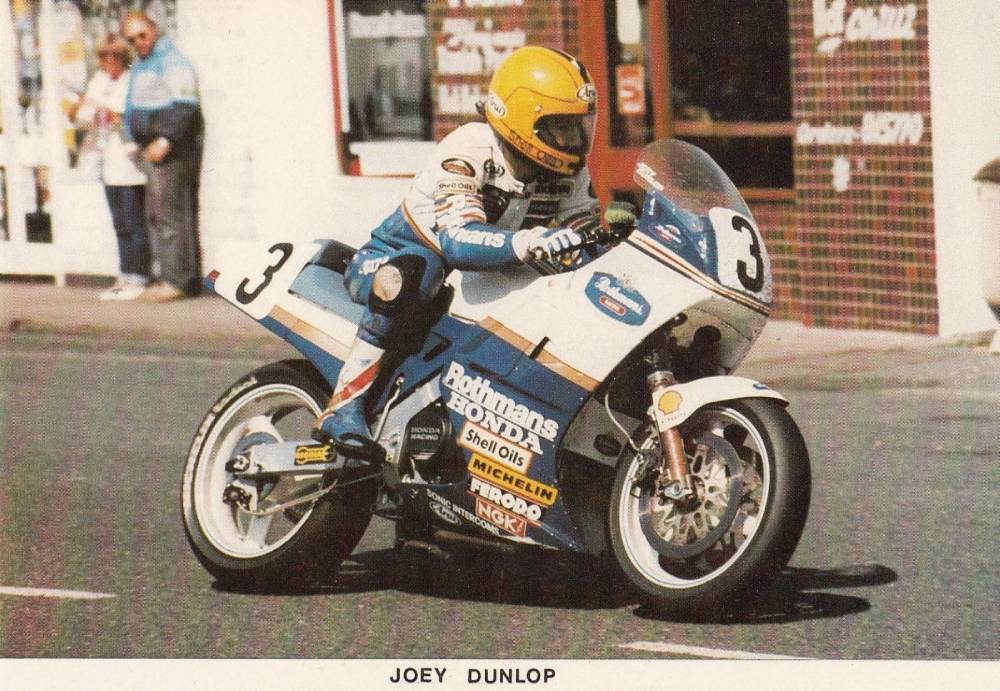
Remember Him For Being Himself
And nearly two decades on since we lost the legend that many consider the best motorcycle racers of all time, his amazing records at the Isle of Man TT still stand today.
His achievements over the mountain include three hat-tricks in 1985, 1988 and 2000, with an amazing 26 victories overall.
He also won the Ulster Grand Prix 24 times along with the North West 200 on 13 occasions.
Further to his amazing feats on the racetrack, he was also awarded the M.B.E. in 1986 for his services to the sport, and in 1996 he received an O.B.E. for his humanitarian work for children in Romanian orphanages.
Joey Dunlop is a name that should ring in the halls of victory with the same grandeur of every sporting hero that dominated their chosen sport.
In the world of motorcycling it does, but Joey was never one to enjoy the limelight, “I never really wanted to be a superstar,” he stated after what would be his final TT victories in the year 2000. “I just wanted to be myself. I hope people remember me that way.”
We do, and we also remember him as a very humble and deserving champion – maybe even the best there ever was!
Keep your riding love alive by reading our LiveToRide magazines for more fascinating content.


